Search Results for Tag: Warming
Arctic sea ice: is the minimum maximum the new normal?
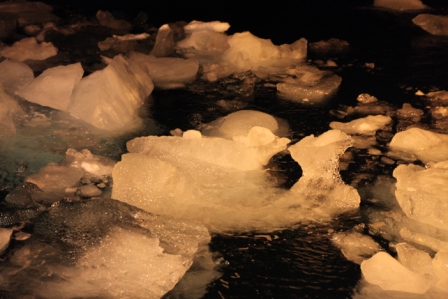
Even the winter sea ice is waning (Off Svalbard, pic. I.Quaile)
If you blinked, you might have missed it. The confirmation came this week that the Arctic sea ice reached yet another all-time low this past winter. It came and went, without too much ado.
Maybe the excitement was just past. The maximum extent was actually reached on March 7th, but of course you can only be sure it is really not going to spread any further once it has definitely been retreating for some time with the onset of spring.
I was waiting for the NSIDC confirmation, but not with any doubt in my mind that it would tell us officially the maximum for this season would be a minimum.
The danger is a “so what?” kind of reaction, or resignation, with the feeling that nothing short of some kind of unprecedented experimental geo-engineering could save the Arctic summer sea ice in the coming years, as the world continues to warm.
Lowest on record
The National Snow and Ice Data Center (NSIDC), part of the Cooperative Institute for Research in Environmental Sciences at the University of Colorado Boulder, and NASA confirmed this week that Arctic sea ice was at a record low maximum extent for the third straight year.
It reached the maximum on March 7, at 14.42 million square kilometers (5.57 milion square miles). Since then, it has started its annual decline with the start of the melt season. Some time in September it will reach its minimum.
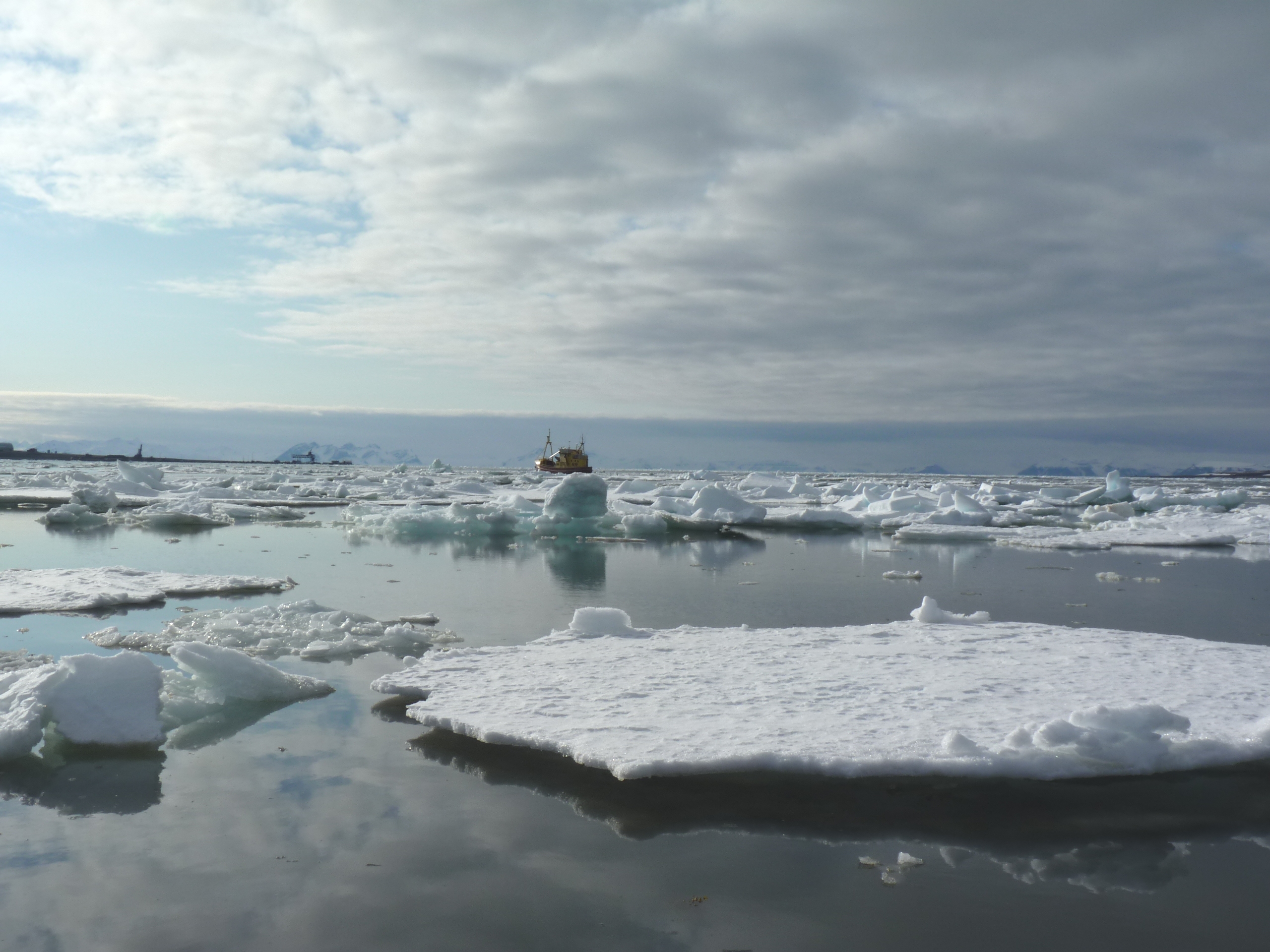
Sea ice going, going, gone? (Photo: I Quaile, off Svalbard)
This year’s maximum is the lowest in the 38-year satellite record. NSIDC scientists said a very warm autumn and winter had contributed to the record low maximum. Air temperatures were 2.5 degrees Celsius (4.5 degrees Fahrenheit) above average over the Arctic Ocean. Against the background of overall warmth came a series of “extreme winter heat waves over the Arctic Ocean, continuing the pattern also seen in the winter of 2015”, NISDC said in a statement.
The air over the Chukchi Sea northwest of Alaska and the Barents Sea north of Scandinavia was even warmer, averaging around 9 degrees Fahrenheit (five degrees C) above the norm.
NSIDC director Mark Serreze said in his statement: “I have been looking at Arctic weather patterns for 35 years and have never seen anything close to what we’ve experienced these past two winters.”
The winter ice cover was also slightly thinner than that of the past four years, according to data from the European Space Agency’s CryoSat-2 satellite. Data from the University of Washington’s Pan-Arctic Ice Ocean Modeling and Assimiliation System also showed that the ice volume was unusually low for this time of year.
Record summer melt ahead?
“Thin ice and beset by warm weather – not a good way to begin the melt season,”, said NSIDC lead scientist Ted Scambos.
A low maximum does not necessarily mean the minimum to be measured in September will also be a record low, as it depends on summer weather patterns. But Julienne Stroeve from NSIDC and professor of polar observation and modeling at the University College London said “Such thin ice going into the melt season sets us up for the possibility of record low sea ice conditions this September”.
“While the Arctic maximum is not as important as the seasonal minimum, the long-term decline is a clear indicator of climate change”, said Walt Meier, a scientist at the NASA Goddard Space Flight Center Cryospheric Sciences Laboratory and an affiliate scientist at NSIDC. Iceblog readers might wonder if that is stating the obvious, but given the attitudes of the US administration, you can’t take anything for granted.

Data from satellites is key. Reception centre at KSAT in Tromso, Norway, Pic. I Quaile)
The September sea ice measurements began to attract attention in 2005, when the ice extent first shrank to a record low over the period of satellite observations. It broke the record again in 2007 and in 2012. There used to be little interest in the maximum extent of the Arctic sea ice at the end of winter. I can remember reading with concern and writing a piece about the maximum extent also reaching a record low in 2015.
NOAA (climate.gov, “science & information for a climate-smart nation”!) said in its statement:
“Arctic sea ice extents have followed a steady downward trajectory since the start of the 21st century – at the same time global temperatures have reached new record highs. Betides setting multiple record low summertime minimum extents, Arctic sea ice began to exhibit a pattern of poor winter recovery starting around 2004.”
Living on thin ice
I remember an expedition to Alaska in 2008, when locals at Barrow told me about their personal experiences of the sea ice becoming thinner and less dependable. Some years later I heard similar reports from people in Greenland, who were selling their sled dogs and buying boats in preparation for changing from ice to open water fishing. The data backs them up.

Sled dog – out of work? (I.Quaile, Greenland)
Yereth Rosen, writing for Alaska Dispatch News, draws attention to the problems of continuing to collect that data. She quotes NSIDC’s Serreze:
“Just how well the center will be able to track sea ice in the future remains unclear. No new satellite is expected to be in place until 2020, and there are concerns about potential interruptions in the record that goes back to 1979… We’re at a situation where the remaining passive microwave instruments up there are kind of elderly. If we have satellite failures, we could lose that eye in the sky”.
Now there is a worrying thought.
Against the background of budget cuts proposed by the Trump administration, that – to put it mildly – does not regard tracking climate change as a high priority – scientists are understandably worried about the future of scientific research on climate and environment related issues.
Method in the madness?
Without reliable continuous satellite data, it would be much harder to track how climate change is affecting the polar regions, the ocean and our planet in general. This may well be the intention of climate-change deniers behind the scenes. But climate change itself will not go away – and the impacts will be increasingly evident.
Tim Ellis, writing for Alaska Public media, quotes Serreze as saying the polar ice cap will not last long if the region continues to warm at this rate.
“We are on course sometime in the next few decades, maybe even earlier, to have summers in the Arctic where, you go up there at the end of August, say, and there’s no ice at all.”
“The view from space in the fall of around 2040” , he went on – assuming we still have satellites to take the pictures – “will be of a blue Arctic Ocean, aside from some scattered icebergs and clusters of pack ice”.
I don’t know about you, but I find that a rather depressing thought.

My kind of sea ice – frozen Chukchi Sea (Pic: I.Quaile)
Implications for the rest of the globe
Andrea Thompson, for Climate Central, writes “even in the context of the decades of greenhouse gas-driven warming, and subsequent ice loss in the Arctic, this winter’s weather stood out.”
She also reminds us of the global impacts of a warming Arctic and decline in sea ice:
“The Arctic was one of the clear global hotspots that helped drive global temperatures to the second- hottest February on record and the third-hottest January, despite the demise of a global heat-boosting El Nino last summer.”
This week the UN’s World Meteorological Organisation (WMO) said 2016 had been the hottest year ever recorded, and that the record-breaking heat had continued into 2017, sending the world into “truly uncharted territory”.
“The dramatic melting of Arctic ice is already driving extreme weather that affects hundreds of millions of people across North America, Europe and Asia, according to emerging research”, Damian Carrington writes in the Guardian.
On March 15th, Carrington published an article entitled “Airpocalypse smog events linked to global warming”, referring to extreme smog occurrences in China.
Optimism – the only way to go?
This week I interviewed German oceanologist and climatologist Mojib Latif. I wanted to find out whether the highly unusual extreme rainfall and flooding happening in Peru could be explained by natural cycles or was likely to be a climate change impact which could reoccur. You can read the interview here or listen to it on my Living Planet show this week online or on soundcloud.
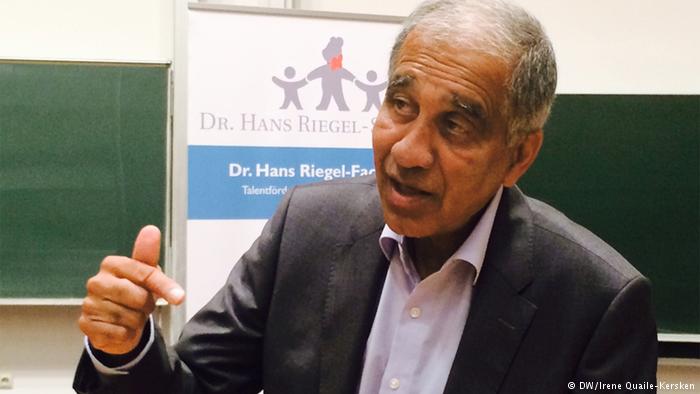
Professor Latif on a visit to Bonn. (Pic. I.Quaile)
The professor stressed that the scientists are baffled, because it is not really the time for an el Nino, although this seems to be a “coastal el Nino”, driven by exceptionally warm water off the coast. Of course he is reluctant to attribute any single event to climate change. He stated unequivocally, though, that the warming of the ocean worldwide was absolutely inexplicable without anthropogenic CO2 emissions, that this is all in line with climate models and that we should all be preparing for an increasing number of increasingly extreme weather events, as the world warms.
He says the governments of the world (apart perhaps from the new US administration) are in no doubt that climate change is happening and they need to halt it. But they have so far failed in their attempts.
When I asked Professor Latif if he still felt optimistic, he told me we really had no other choice. While critical of the lack of government action, he is convinced the world will realize that renewables are ultimately far superior to fossil fuels and will ultimately prevail. The question is whether that will happen in time. As far as the Arctic summer sea ice is concerned, I have to go with a Scots expression: “A hae ma doots”.
Will new climate scientist on board influence Exxon?
Last year I had an interesting guest in the studio here at Deutsche Welle. We talked for a good half hour about climate change and the ocean and the need for the Paris Agreement to be put into action, and whether we can still save the Arctic ice as we have known it in our lifetimes.
Excerpts from the interview were broadcast on Living Planet and published online.
Susan Avery is an atmospheric scientist. She was President and Director of the renowned Woods Hole Oceanographic Institute from 2008 to 2015, and became a member of the scientific advisory board to UN Secretary General Ban Ki Moon in 2013. She was in Bonn for a lecture organized by Björn Müller-Bohlen from the department of strategic partnerships at the Forum of International Academic Sciences in Bonn, to explain to people here how climate change is affecting the ocean.
I was surprised to say the least when I saw that from the beginning of February Dr. Susan K. Avery had been elected to the board of directors of ExxonMobil.
Topsy-turvy world?
So the former Exxon chief Rex Tillerson has taken the key post of Secretary of State in the Trump administration, climate skeptic Scott Pruitt takes over the EPA, the world worries about the future of the climate and the environment – and a leading climate scientist has joined the “largest publicly traded international oil and gas company and one of the largest refiners and marketers of petroleum products”, as ExxonMobil describes itself. It is also at the centre of a huge controversy over claims that it denied climate change, covering up facts and funding climate skeptic bodies. Interesting times indeed. (The Dawn of the Trumpocene?) What are we to make of it all?
I emailed Dr. Avery to try to arrange another interview to discuss her motivation and expectations. She did respond swiftly, telling me she was “honored to be elected to the Board and look forward to serving in that capacity.” But interview requests are being handled by Exxon.
Reactions to her appointment have been mixed, ranging from those who see this as a mere greenwashing type of move by Exxon, and those who think this represents a gradual shift in thinking in the corporation (pragmatic shift to renewable energies given the problems ahead for fossil fuel companies?) and the optimists who think this could possibly even be a chance for a climate expert to influence the policies of the fossil fuel giant and a sign that the times are ‘a changin’.
From the “horse’s”mouth
I decided to have another look and listen to the interview I recorded with Dr. Avery last year, to remind myself and those who will be watching her actions with interest, of what she stands for when it comes to protecting the climate, the ocean and the Arctic.
She is certainly in no doubt about the human factor in climate change. When I mentioned that we humans had been “interfering” with the climate, she laughed good-naturedly at my under-statement, and went on to elaborate on how we are increasing the temperature of the atmosphere by infusing carbon into it. She clearly named fossil fuels as a cause. So what, I wonder, will she be telling the board of ExxonMobil?
Our subject was the effect of greenhouse gas emissions on the oceans in particular. She stressed that while 25 percent of the carbon dioxide we release goes into the atmosphere, a stunning 93 percent of the extra warming created is in the ocean. I went on to ask her about the impacts:
“The carbon dioxide we’ve put into the atmosphere already and the heating associated with that means that we’re already pre-destined for a certain amount of global temperature increase. Many people say we have already pre-destined at least one and a half degrees, some will say almost two degrees. That’s why it’s really important to address the warming questions. And I was really pleased to see the Paris Agreement finally signed off on.”
Fossil fuel threat to the ocean
With the future of US participation in implementing the Paris Agreement very much up in the air under the Trump administration, one wonders how Avery is going to push the decarbonisation of the economy necessary to keep anywhere near the two degree limit, on the board of one of the world’s biggest oil and petroleum concerns.
She also stressed in her talk with me the huge threat to the food chain posed by ocean acidification, as carbon dioxide emissions change the PH of the ocean.
“Our coral reef systems and a lot of our ecosystems in the ocean are having a battle with warming, and those ecosystems that involve shell production and reproduction, as in our reef systems, are also battling acidification issues. This is really critical, because it attacks a lot of the base of the food chain for a lot of these eco-systems. “
Another of the threats to the ocean and the creatures in it is pollution, and Avery told me her time as head of Woodshole was a time of “many crises in the ocean” – including the Deep Water Horizon oil spill:
“That was a real challenge for us in terms of looking at the technologies we have in a different way, solving a different type of problem, and from these crisis moments we learned a lot about our science and our technology, and how to improve it and go forward.”
Well, here’s hoping that knowledge and Dr. Avery’s expertise here will help the company where she is now on the board.
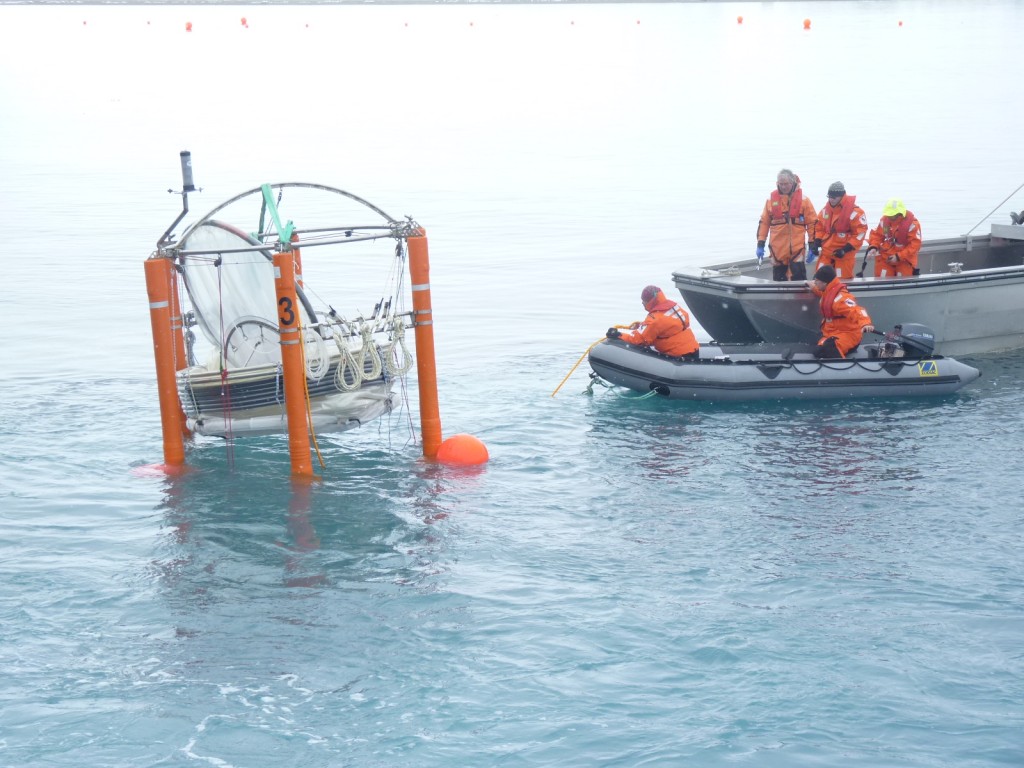
Scientists are concerned about the effects of ocean acidification. This mesocosm is monitoring in Arctic waters. (I.Quaile)
Kudos for the journos
Another point that came out of our interview was Avery’s firm belief in the key role the media have to play in explaining what is happening to our climate and environment to “ordinary people”.
“It is things like Living Planet and others that really begin to educate people and involve people in understanding their environment and their planet,” she said in the DW studio.
As host and producer of Living Planet together with my colleague Charlotta Lomas, it was good to have that acknowledgement from a leading scientist and adviser to the UN. Avery also mentioned progress in recent decades in raising public awareness of environmental issues, such as pollution or acid rain, thanks not least to media coverage.
Unfortunately that job is not made any easier – especially in the United States – with an administration that tries to gag journalists and, it seems, any organization that does not spread the information the government think should be spread.
Motives and methods
So what motivates someone like Susan Avery to take on a controversial position like board membership on a company whose main business results in harmful changes to the planet which she has been working for years to publicise? Perhaps another snippet from the interview can shed some light, when I asked my guest Avery how she had come to be a member of the board of advisors to Ban Ki Moon (not that I would compare that to joining ExxonMobil).
“I was intrigued by the opportunity to play on a stage level that was very high politically, and making sure that science was interfaced in a number of dimensions, into the policy and decision-making process at that level. The committee itself is a wonderful board in terms of the different disciplines represented, different countries represented, different perspectives we all have on the science and the environment, and on human health issues, that the UN needs to be cognizant of.”
Clearly, this is a woman who likes to be in influential positions – and to bring different camps and expertise together:
“We talked a lot about science, the policy-society interface, the role and engagement of stakeholders, those are governments at all levels, the business community, and conservation.
What about the Arctic?
Of course one of the Iceblogger’s most urgent concerns is what climate change is doing to the polar regions. With record temperatures in the Arctic and record low sea ice cover, I asked Avery to sum up the impacts for our Living Planet listeners. She expressed her concern that “we are beginning to see a very rapid increase in ice loss in the Arctic”. She cited the melting of the big land ice glaciers as a major contributor to sea level rise. She talked of how not only atmospheric temperature but warming ocean waters are degrounding glaciers and melting ice from below:
“That is a major concern for sea level rise, but also because when the land-based ice comes into the ocean, you get a freshening of certain parts of the ocean, so particularly the sub-polar north Atlantic, so you have a potential for interfacing with our normal thermohaline circulation systems and (this) could dramatically change that. Changes in salinity are beginning to be noticed. And changes in salinity are a signal that the water cycle is becoming more vigorous. So all of this is coupled together. What’s in the Arctic is not staying in the Arctic. What’s in the Antarctic is not staying in the Antarctic. I would say the polar regions are regions where we don’t have a lot of time before we see major, massive changes”.
So let us hope Dr. Avery will be able to convince her fellow board-members and the decision makers at ExxonMobil about that – and about what has to happen. Fossil fuel emissions in general have got to go down. And the fragile Arctic in particular is in need of protection. Clearly, she has her work cut out for her.
Is there still time?
Reporting Avery’s appointment to the ExxonMobil board, the news agency AFP quotes her as saying:
“Clearly climate science is telling us (to) get off fossil fuels as much as possible.”
I asked her whether she believed, given that we have already put so much extra CO2 into the atmosphere and the ocean, that there was any way we would be able to reverse what is happening in the Arctic. Her reply – unsurprisingly – was not too reassuring:
“I don’t have an answer, to be honest. I think we’re still learning a lot about the Arctic and its interface with lower latitudes, how that water basically changes circulation systems, and on what scale. (…)We know so little, about the Arctic, the life forms underneath the ice (…) And I think it’s really important, because the Arctic will be a major economic zone. We’ve already seen the North-West Passage through the Arctic waters, we’re going to see migration of certain fisheries around the world, and we don’t even know completely what kind of biological life we have below that ice. We have the ability to get underneath the ice now. I call these the frontiers, of the ocean, and that includes looking under ice. It’s a really exciting time.”
If that excitement can be put into protecting the fragile polar ecosystems rather than taking advantage of our emissions misdeeds to date to use easier access for commercial exploitation, I am all for it.
ExxonMobil remains a primary target of environmentalists. It has been the subject of investigative reports by environmental news nonprofit Inside Climate News and others, saying it “manufactured doubt” about climate science even while contradicted by research by its own climate scientists. The company says the reports are biased, but faces government investigations over the controversy. In January, a Massachusetts court ruled the oil giant must turn over 40 years of documents on climate change, in a win for Massachusetts Attorney General Maura Healey, who has described the probe as a fraud investigation. ExxonMobil has countersued against Healey, arguing she lacks jurisdiction in the matter.
As I indicated above, there are environmentalists who were not impressed by the appointment of a climate scientist to the fossil fuel giant’s board. AFP quotes Shanna Cleveland of Ceres, a nonprofit group that works on shareholder actions to pressure companies to address climate change. She called the move a “really good first step, but not much more than that”, and fears Susan Avery could be a “lone vote in the wilderness” on climate change given ExxonMobil’s record on the issue.
The climate advocacy group 350.org dismissed the appointment as “little more than a PR stunt.”
Scientists to the fore
But at a time when some critics say the Trump administration is threatening environmental democracy in the USA, I would prefer to see Dr. Avery’s new position as a move in the right direction, if a tiny one.
With scientists gearing up to march on Washington in the not-too-distant future, we can do with experts who acknowledge, understand and call for action on climate change on every level, in every corner.
Susan Avery described her time on the UN scientific advisory board in her interview with me here in Bonn as as “a fun exercise.” In the current climate, I cannot imagine the same will apply to being the climate advocate on the board of a controversial fossil fuels giant like ExxonMobil.
“Cheers” to a cool Arctic in 2017
As 2016 draws to an end, the shortest day has passed in the northern hemisphere, and it should normally be a “cool” time of the year, in more ways than one, especially in the Arctic. But with temperatures at a record high, sea ice at a record low and feedback loops springing into action, the Arctic is hotting up – and I wish I could say the same for efforts to halt climate change.
Ice expert Jason Box tweeted this morning:
North pole near or at melting, strange given 24 h darkness there now, cold space aloft… is all about heat inflow from south @PolarPortal pic.twitter.com/r5C4i28vKR
— Jason Box (@climate_ice) December 23, 2016
Meteorologist Scott Sutherland writes on Dec. 22nd:
“(…) North Pole temperatures have climbed to 30oC hotter than normal for this time of year.
(…) Now, in late December, in the darkness of the Arctic winter, air temperatures at the North Pole have actually reached the freezing point, as recorded by weather buoys floating within a few degrees of the pole. As of the morning of Thursday, December 22 (3 a.m. EST), the International Arctic Buoy Programme (IABP), operated out of the University of Washington, recorded temperatures from these buoy up to 0oC or slightly higher.”
“(…) Right now, Arctic sea ice extent is at the lowest level ever recorded.”
Arctic in need of tlc?
It looks like the Arctic is urgently in need of some tlc – or maybe intensive care would be more fitting.
The Arctic Report Card for 2016 recently published by NOAA should have set alarm bells ringing. Based on environmental observations throughout the Arctic, it notes a 3.5 degree C increase since the beginning of the 20th century. The Arctic sea ice minimum extent tied with 2007 for the second lowest value in the satellite record – 33 percent lower than the 1981-2010 average. That sea ice is relatively young and thin compared to the past.
A “shrew”d indicator of Arctic warming
Let me quote what are described as the “Highlights”:
“The average surface air temperature for the year ending September 2016 is by far the highest since 1900, and new monthly record highs were recorded for January, February, October and November 2016.
After only modest changes from 2013-2015, minimum sea ice extent at the end of summer 2016 tied with 2007 for the second lowest in the satellite record, which started in 1979.
Spring snow cover extent in the North American Arctic was the lowest in the satellite record, which started in 1967.
In 37 years of Greenland ice sheet observations, only one year had earlier onset of spring melting than 2016.
The Arctic Ocean is especially prone to ocean acidification, due to water temperatures that are colder than those further south. The short Arctic food chain leaves Arctic marine ecosystems vulnerable to ocean acidification events.
Thawing permafrost releases carbon into the atmosphere, whereas greening tundra absorbs atmospheric carbon. Overall, tundra is presently releasing net carbon into the atmosphere.
Small Arctic mammals, such as shrews, and their parasites, serve as indicators for present and historical environmental variability. Newly acquired parasites indicate northward shifts of sub-Arctic species and increases in Arctic biodiversity. “
Getting the message across
The NOAA website sums it up in a video, saying:
“…Rapid and unprecedented rates of change mean that the Arctic today is home to and a cause for a global suite of trillion dollar impacts ranging from global trade, increased or impeded access to land and ocean resources, changing ecosystems and fisheries, upheaval in subsistence resources, damaged infrastructure due to fragile coastlines, permafrost melt and sea level rise, and national security concerns.
In summary, new observations indicate that the entire, interconnected Arctic environmental system is continuing to be influenced by long-term upward trends in global carbon dioxide and air temperatures, modulated by regional and seasonal variability.”
Margaret Williams, the managing director for WWF’s US Arctic programme had this to say:
“We are witnessing changes in the Arctic that will impact generations to come. Warmer temperatures and dwindling sea ice not only threaten the future of Arctic wildlife, but also its local cultures and communities. These changes are impacting our entire planet, causing weather patterns to shift and sea levels to rise. Americans from California to Virginia will come to realize the Arctic’s importance in their daily lives.
“The science cannot be clearer. The Arctic is dramatically changing and the culprit is our growing carbon emissions. The report card is a red flashing light, and now the way forward is to turn away from fossil fuels and embrace clean energy solutions. Protecting the future of the top of the world requires us to reduce emissions all around it.”
Sack the teacher, kill the messenger?
That was her response to the Arctic Report Card. In my school days, the report card was a business to be taken seriously. A bad report meant you were in trouble and would have to smarten up your act or you would be in big trouble with mum and dad.
The question is – who gets the report, and who has to smarten up their act?
This one should make the governments of this world speed up action on mitigating climate change and getting ready for the impacts we will not be able to halt.
Then again, they could just try to get rid of the messengers who come up with the bad news. If your kid’s report card is bad, do you try to improve his performance – or get rid of the teacher who came up with the negative assessment – based on collected data?
I am concerned that the administration in the wings of the US political stage could be more likely to do the latter. As I wrote in the last Ice Blog post, the new Trump administration is threatening to cut funding for climate research. The proposed new Cabinet is well stocked with climate skeptics.
Concern about research
Financial support for the Arctic Report Card is provided by the Arctic Research Program in the NOAA Climate Program Office. Its preparation was directed by a “US inter-agency editorial team of representatives from the NOAA Pacific marine Environmental Laboratory, NOAA Arctic Resarch Program and the US Army Corps of Engineers, Cold Regions Research and Engineering laboratory.
Yereth Rosen, writing for Alaska Dispatch News, quotes Jeremy Mathis, the director of NOAA’S Arctic research program and one of the editors of the report card.
“The report card this year clearly shows a stronger and more pronounced signal of persistent warming than in any previous year in our observational record”.
“We hope going into the future that our scientists and researchers still have the opportunity to contribute and make possible the summary that we’re able to present. So we have every intention of continuing to publish the Arctic Report Card as we have in the past and pulling together the resources and the right people that allow us to do that”.
Livid and acrimonious
The debate over President Obama’s announcement that he was making a vast area of the Arctic Ocean off-limits to drilling for oil or gas, shows the dilemma of our times – and .. which could influence the living conditions on our planet for generations to come.
Erica Martinson, writing for the Alaska Dispatch News, provides interesting insights into the debate for those of us who do not live in Alaska.
She quotes Alaska’s Republican Congressman Don Young, saying he used “livid language” in his response. Obama’s move means “locking away our resources and wuffocating our already weakened economy”. He goes on “Alaska is not and shuld not be used as the poster child for a pandering environmental agenda”.
Ooh. Livid indeed.
She also quotes Republican Senator Dan Sullivan as describing the move as “one final Christmas gift to coastal environmental elites”. So would those be the indigenous communities being forced to relocate because climate changes are destroying their homes, Senator?
The administration, on the other hand, says it is protecting the region from the risk of a catastrophic oil spill, Martinson writes.
It seems to me that Obama’s parting gift goes rather to the “Alaska Native communities of the North Slope” who “depend largely on the natural environment, especially the marine environment, for food and materials”, and to the many endangered and protected species in the area, “including bowhead and fin whales, Pacific walrus, polar bear and others”.
What about the Paris Agreement?
But as well as that regional aspect, the decision not to open up new regions to drilling for oil and gas is in line with the global need to cut fossil fuel emissions to halt the warming of the world.
Jamie Rappaport Clark, CEO of “Defenders of Widife”, puts it:
“It marks the important recognition that we cannot achieve the nation’s climate-change goals if we continue to expand oil and gas development into new, protine environments like the Arctic and Atlantic Oceans”.
This is not just about Alaska, not just about the Arctic, but the future of the planet as a whole.
The World Meteorological Organization (WMO) says 2016 is on track to be the hottest year on record. According to UN estimates, the global temperature in 2016 was 14.88 degrees C – 1.2 degrees higher than before the industrial revolution began in the mid-19th century.
In an article for the New York Times on December 22, Henry Fountain and John Schwartz quote NOAA’s Arctic Research Program director Jeremy Mathis.
“Warming effects in the Arctic have had a cascading effect through the environment” “We need people to know and understand that the Arctic is going to have an impact on their lives no matter where they live”. That includes the oil-industry-friendly and climate skeptical team that is set to enter the White House in the New Year,
So when I propose a toast to a cool Arctic in 2017, I am not just thinking of my friends in the high north. For all our sakes, we have to kick our fossil fuel habits, save energy and cut the emissions which keep the giant refrigerator that helps make our world a viable place to live well chilled.
Can environmentalists trump Trump’s climate plans?
When it comes to the latest data on the state of the Arctic sea ice, the Greenland ice sheet or other key features of the cryosphere, the chances are NASA will have been involved in providing it. For those of us interested in protecting our icy regions against climate change, US President-elect Donald Trump’s plan to scrap NASA’s climate research and shift the funding to space exploration is alarming, to say the least.
Why the world needs NASA – not just for space
Two of my colleagues at DW talked to leading scientists about Why Trump scrapping NASA climate funding is bad news for our planet. Thomas Hollands from the German polar agency the Alfred Wegener Institute explains the essential role played by NASA’s network of satellites in providing data for climate researchers the world over.
“Scientists around the world depend on NASA for a variety of information – from measuring the state of the Earth’s atmosphere and the shape of its gravity field, to observations on glacier melting, sea ice formation, forest loss and urban growth”, the article says. It goes on to explain how important it is to have continuous measurements over time to be able to establish trends and changes.
Presumably, of course, if the Trump administration makes good on election promises to revive the US coal industry, there are those who would find it advantageous to get rid of any technology that can measure the extent of the impact of fossil fuel emissions on the world’s climate. A scenario to be avoided at all costs.
Fighting back
So I was interested to read a piece on the news agency AP this week headlined “Trump rollback of Obama climate agenda may prove challenging”. I hope “challenging” will turn out to be an understatement.
The story, by Michael Biesecker, says a President Trump would be in a strong position to dismantle some of President Obama’s efforts to reduce carbon emissions:
“But experts say delivering on campaign pledges to abolish the Environmental Protection Agency and bring back tens of thousands of long-gone coal mining jobs will likely prove far more difficult for the new president”, Biesecker writes.
Environmental groups are gearing up to defend Obama’s environmental legacy in court. Sierra Club Executive Director Michal Brune is quoted as saying “we intend challenging every single attempt to roll back regulations on air, water and climate”, and that his group is already hiring additional lawyers. It does not surprise me that fundraising for environmental causes has also spiked since Donald Trump’s victory.
The question is just how much the President is able to do and what tools are available to opponents to stop him.
The powers of the President
Many legal experts believe Mr. Trump would be able to cancel the Paris Climate Treaty, as he threatened to do when he was campaigning (although his stance has shifted slightly in the meantime). It is not a treaty and was not approved by the (Republican-controlled) Senate. The future president could also order the EPA – where the transition team is being led by a climate skeptic leading a think-tank funded by the fossil fuel industry – not to take the action required to meet the US commitment to cut emissions.
It seems, though, that it is not that easy to dismantle EPA regulations which have already been finalized and implemented. Jody Freeman, director of the environmental law program at Harvard Law School, is quoted as saying “the agency has already built up a very strong record to support those rules”. Ultimately, “it can be very hard to do an about-face.”
From the legal point of view, the President cannot get rid of the EPA without congressional approval – which could be prevented by filibustering. (He could, of course, slash its budget).
When it comes to abolishing NASA’S climate research programme, Mr Trump will also find himself facing some tricky hurdles.
“NASA’s study of earth science is currently mandated by federal law, which means voiding the program would require congressional action”, AP writes. That too means Democrats could block things using a filibuster.
What happened to common sense?
Ideally, common sense and concern for the wellbeing of people and the health of the planet we live on should ensure that Obama’s environmental and climate policies are not turned around. The advances in renewable energy also mean it makes economic sense to shift away from fossil fuels to wind and solar. In fact, it seems the courts will have to tackle the ins- and outs in lengthy and costly investigations.
This past week, in the USA, a group of American youths officially won the right to sue the government of the United States – the world’s second-largest greenhouse gas emitter after China – for failing to curb climate change. The Oregon district court upheld the main argument, that “the government has known for more than 50 years that the carbon dioxide produced by burning fossil fuels was destabilizing the climate system in a way that would significantly endanger plaintiffs, with the damage persisting for millennia.” Yet, the court argues, the government has failed to take action, making it responsible for some of the harm caused by climate change.
Here in Germany, there is also a court case in process, which could set a precedent. A farmer and mountain guide in the Peruvian Andes is suing the German energy giant RWE. Saúl Lliuya from Huaraz says his home is at risk of flooding, as it lies beneath a melting glacier in the Andes mountains. He argues that the company’s coal power emissions contribute to climate change, and so RWE should have to pay a share of measures to protect his home. But RWE says there is no direct link connecting CO2 emissions to the danger of flooding. Lliuya is being supported by the environmental organization Germanwatch. In my Living Planet radio show this week I broadcast an interview with the organisation’s policy director, Christoph Bals.
The plaintiff’s argumentation is that because RWE has produced 0.5 percent of all global emissions since the industrial revolution, the company should at least pay 0.5 percent of the measures to protect the farmer and his home town from flooding as the glacier above it continues to melt. Bals sees it as a major achievement that the case is being dealt with in the German court as one that could set a precedent. Even if the lawyers are not able to prove a direct link and win the case, he says getting to this stage is a demonstration that it is possible to go to court against companies like RWE on climate grounds.
“From now on this is one of the options on the table. I am sure that as soon as we see in the world that we will not stay below two degrees or 1.5 as said in the Paris Agreement, those cases will be much more likely – and it will be much more likely also that the individual court will decide you are right. So for the future this would be one major option if we don’t get a political solution”.
There has to be some food for thought in there for Mr. Trump and his advisors. Interesting times, indeed. And environment and climate advocates have their own trump cards in their hands.
New report sees Arctic melt on course to tip global climate
Scientists say the Arctic archipelago of Svalbard has seen such extreme warmth this year that the average annual temperature could end up above freezing for the first time on record. Ketil Isaksen of the Norwegian Meterological Institute said today the average temperature in Longyearbyen, the main settlement in Svalbard, is expected to be around 0 Celsius with a little over a month left of the year. He called the abnormal warmth “shocking” and beyond anything he could have imagined 10 years ago. The normal yearly average is minus 6.7 C.
And that is not the only shocking thing going on up north. The Arctic sea ice is melting in November. Temperatures in the region are 20 degrees Celsius above usual. Reindeer are dying across Siberia. Polar bears are stranded on land. It’s hard to keep up with the extent and speed of climate change in the far north of the planet. And we in the media have to be aware of the danger that the reports become so commonplace the “new normal” no longer arouses interest.
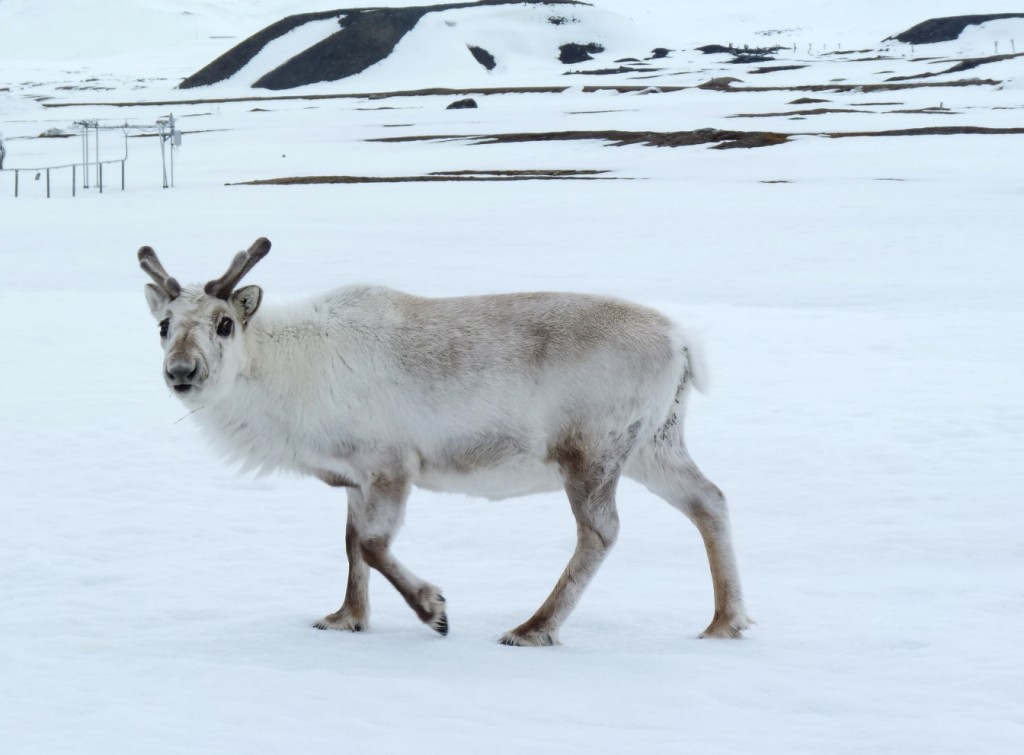
Svalbard’s sturdy reindeer are adapting to climate change. In Siberia, thousands of animals have died of starvation. (Pic: I.Quaile)
Warming, warming, hot
Yet the ever faster melting of our Arctic ice could spell disaster even for distant regions of the planet. What happens in the Arctic doesn’t stay in the Arctic, as discussed here on the Ice Blog many times before. But a new, key report launched today indicates that the effects of increasingly rapid Arctic warming could be set to push global climate change out of control.
The Arctic Resilience Assessment (ARA) is an Arctic Council project led by the Stockholm Environment Institute and the Stockholm Resilience Centre. It is based on collaboration with Arctic countries and Indigenous Peoples in the region, as well as several Arctic scientific organizations. The ARA (previously Arctic Resilience Report) was initiated by the Swedish Ministry of the Environment as a priority for the Swedish Chairmanship of the Arctic Council (May 2011 to May 2013) and is being presented under the US Chairmanship. It aims to synthesize knowledge on Arctic change and how people and the ecosystem are coping with it, bringing the wide range of different factors together.
“Environmental, ecological, and social changes are happening faster than ever in the Arctic, and are accelerating. They are also more extreme, well beyond what has been seen before. This means the integrity of Arctic ecosystems is increasingly challenged, threatening the sustainability of current ways of life in the Arctic and disruption of global climate and ecosystems”, the report says.
Beyond the tipping point
The researchers issue a stark warning: “Some changes are so substantial (and often abrupt), that they fundamentally alter the functioning of the system: an ecological “tipping point” has been crossed. The report examines 19 of these “tipping points” or “regime shifts”, as they are also known: “They affect many ecosystem services that are important to people within and outside the Arctic: from regulating the climate, to providing sustenance (e.g. through fishing)”, the experts tell us.
“The consequences of some of these shifts are likely to be surprising and disruptive – particularly when multiple shifts occur at once. By altering existing patterns of evaporation, heat transfer and winds, the impacts of Arctic regime shifts are likely to be transmitted to neighbouring regions such as Europe, and impact the entire globe through physical, ecological and social connections”, the report says.
The tipping points discussed in the report include the replacement of white ice and snow, which reflect heat back into space, by darker green vegetation or ocean water, which absorbs more heat, higher releases of methane and changes to ocean circulation and so weather patterns around the globe caused by an influx of melting snow and ice.
Major impacts inevitable?
Johan Rockström, director of the Stockholm Resilience Centre and co-chair of the five-year study said in a statement: “If multiple regime shifts reinforce each other, the results could be potentially catastrophic.… The variety of effects that we could see means that Arctic people and policies must prepare for surprise. We also expect that some of those changes will destabilize the regional and global climate, with potentially major impacts”.
The report stresses that many of the changes and feedback effects in process are poorly understood and in need of much more research.
“Arctic ecological protection is now a global concern, and worldwide monitoring is inadequate”, the authors write.
Political “regime shift”?
To reduce the risk of these tipping points, strong action would have to be taken to mitigate climate change, the authors conclude. Aha. Now there’s the rub.
In the Guardian, Fiona Harvey notes the report comes at a critical time in politics, with Donald Trump’s announcement this week that he plans to take away NASA’s budget for climate science and put it into space exploration. She quotes Marcus Carson of the SEI, co-editor of the report:
“That would be a huge mistake…It would be like ripping out the aeroplane’s cockpit instruments while you are in mid-flight”.
If Mr. Trump also makes good his pledge to revive the US coal industry and abandon the Paris Climate Agreement, the chances of halting warming and the climate feedback mechanisms which could spell disaster would seem to be melting away along with that Arctic ice. Not so tasty food for thought this weekend. Well, I could distract myself by getting out the lawnmower. It has been so warm here this week the birds are chirping like spring and the grass has started to grow again.




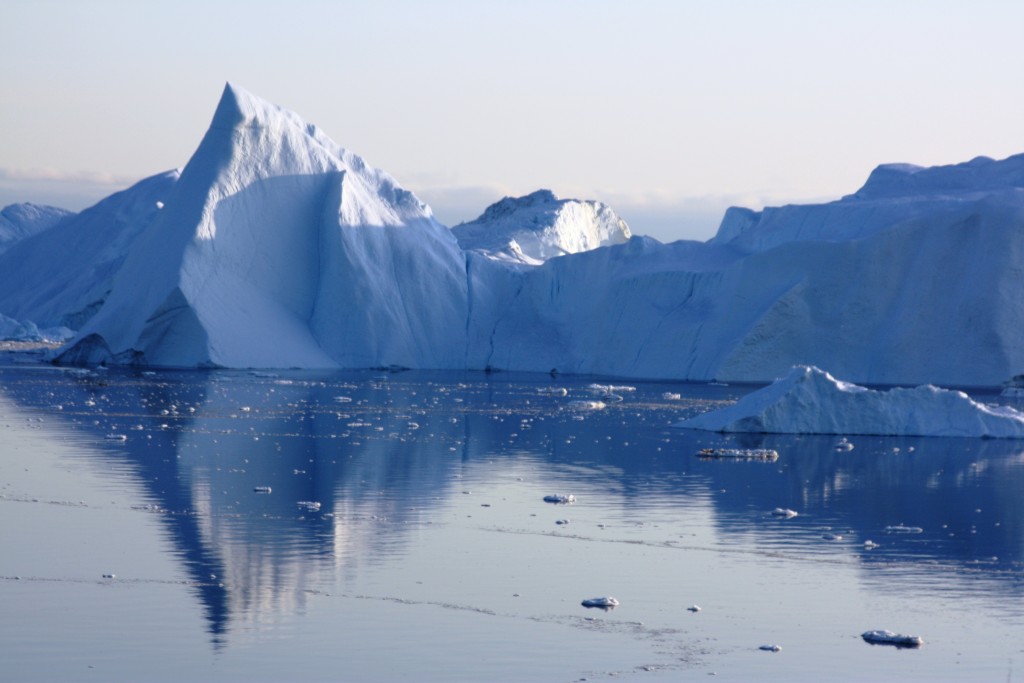
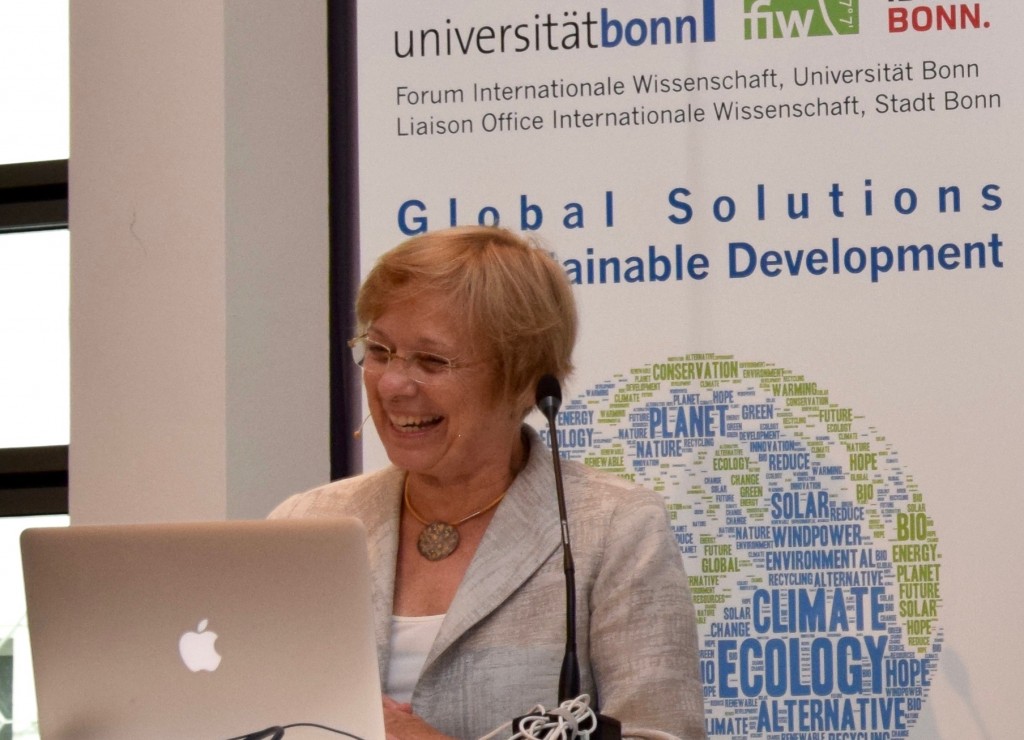
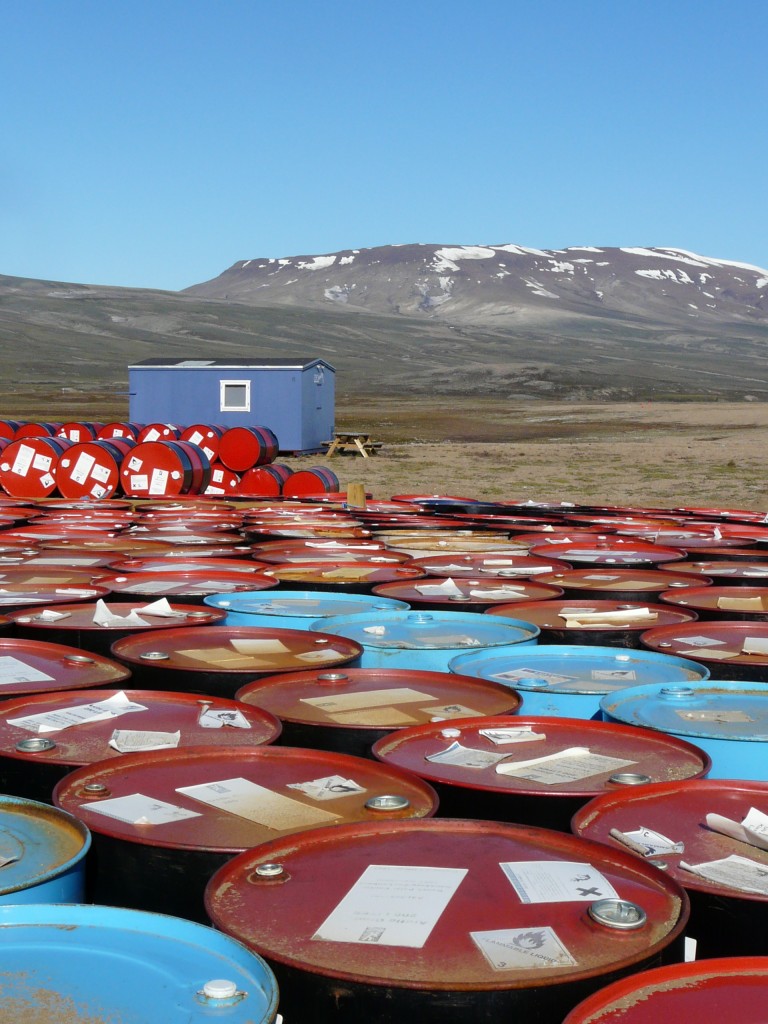
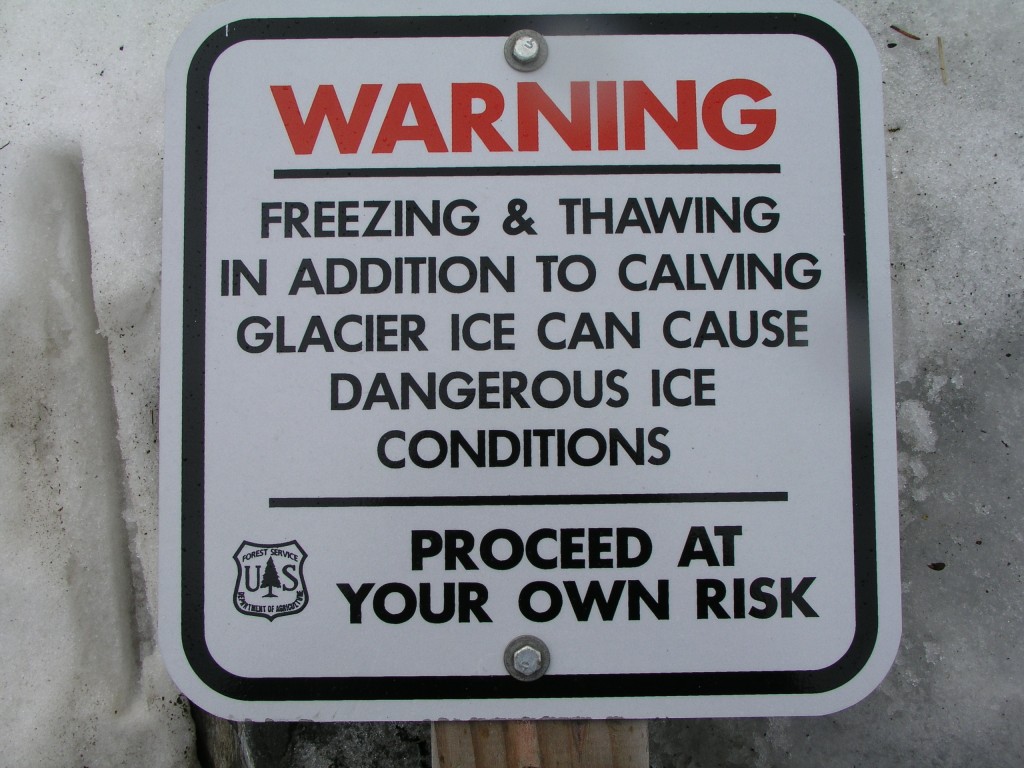
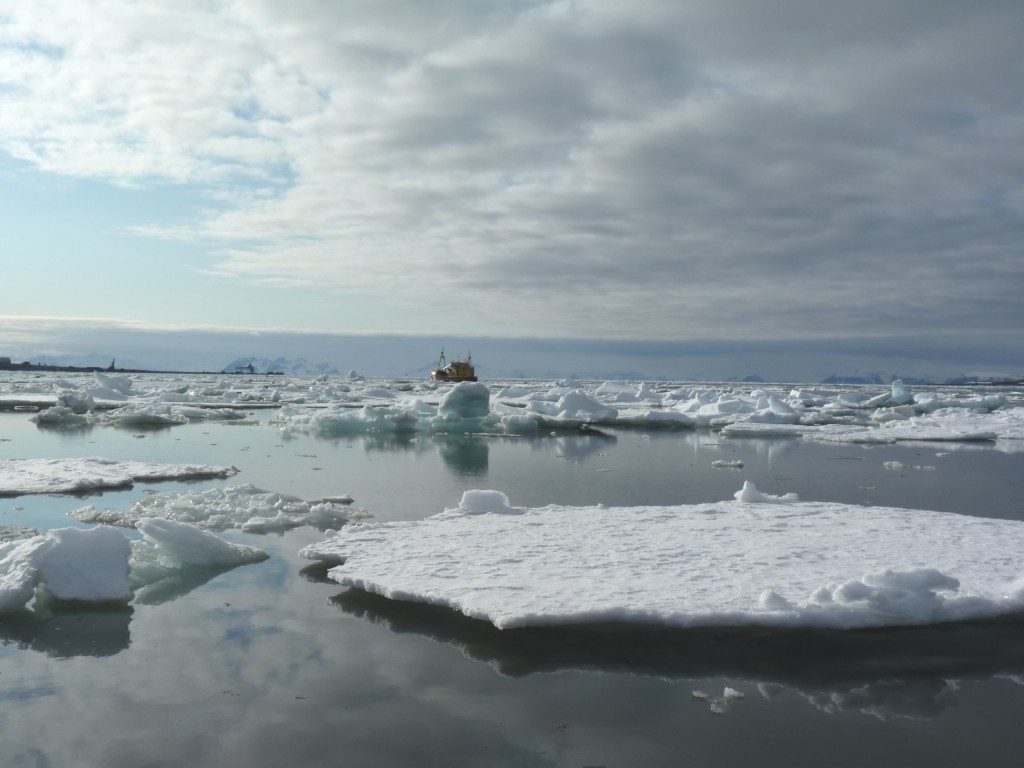
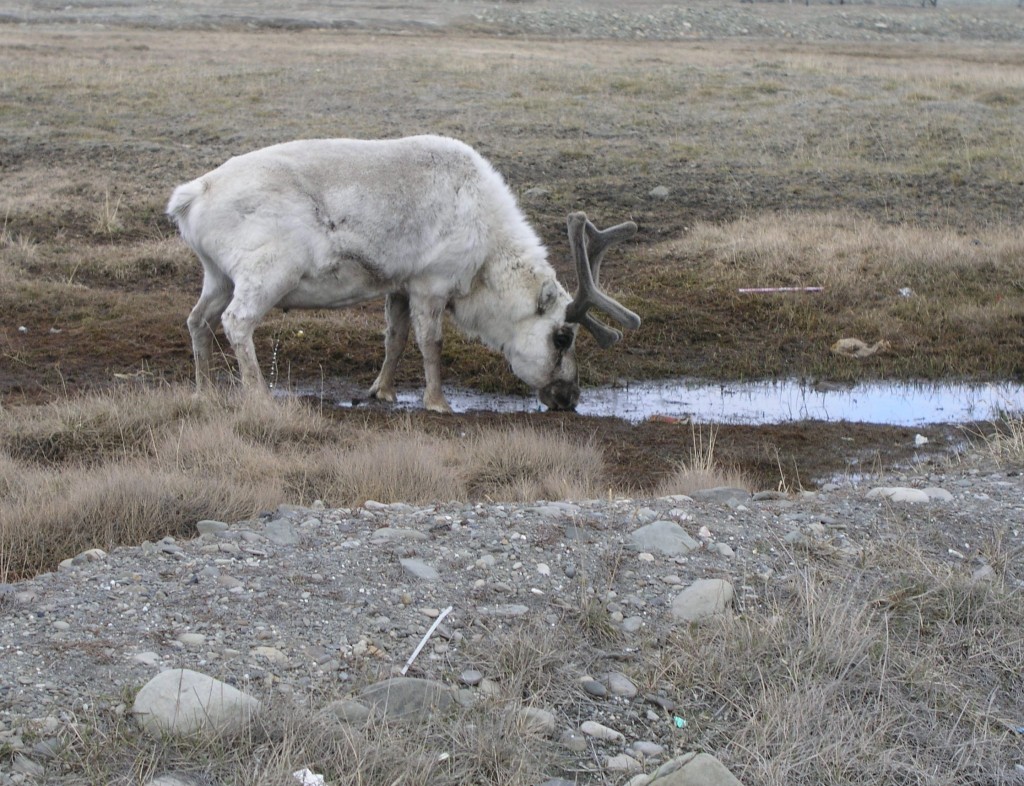
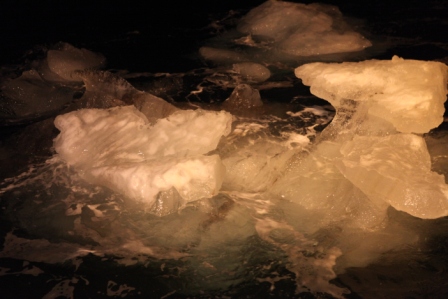
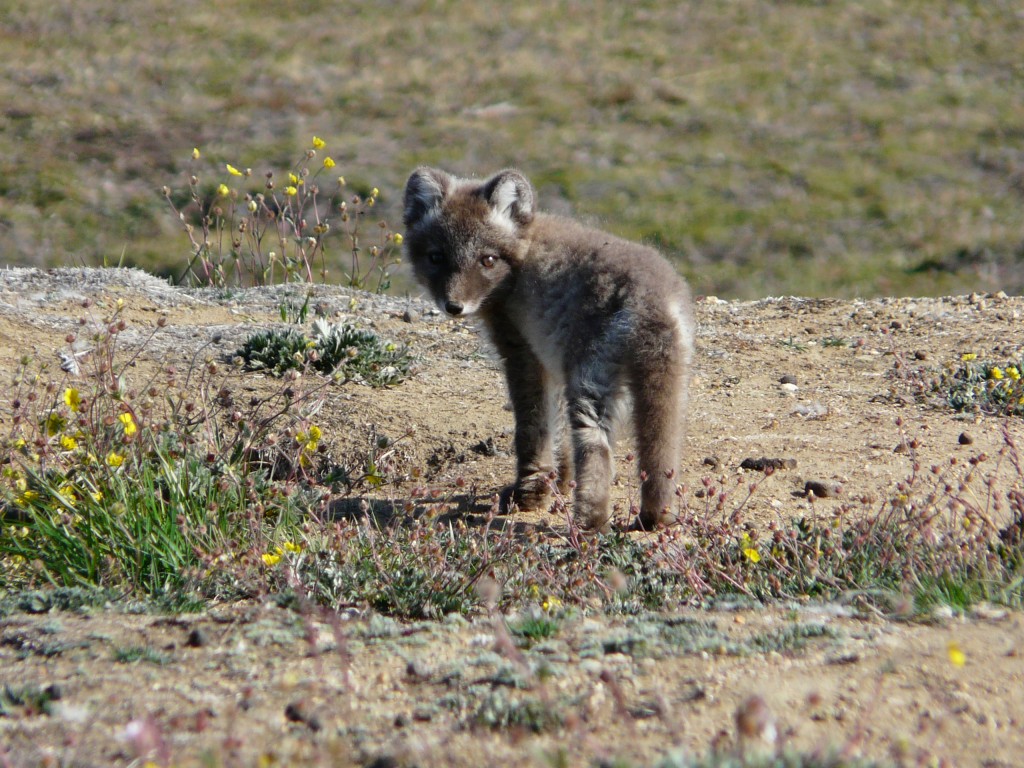
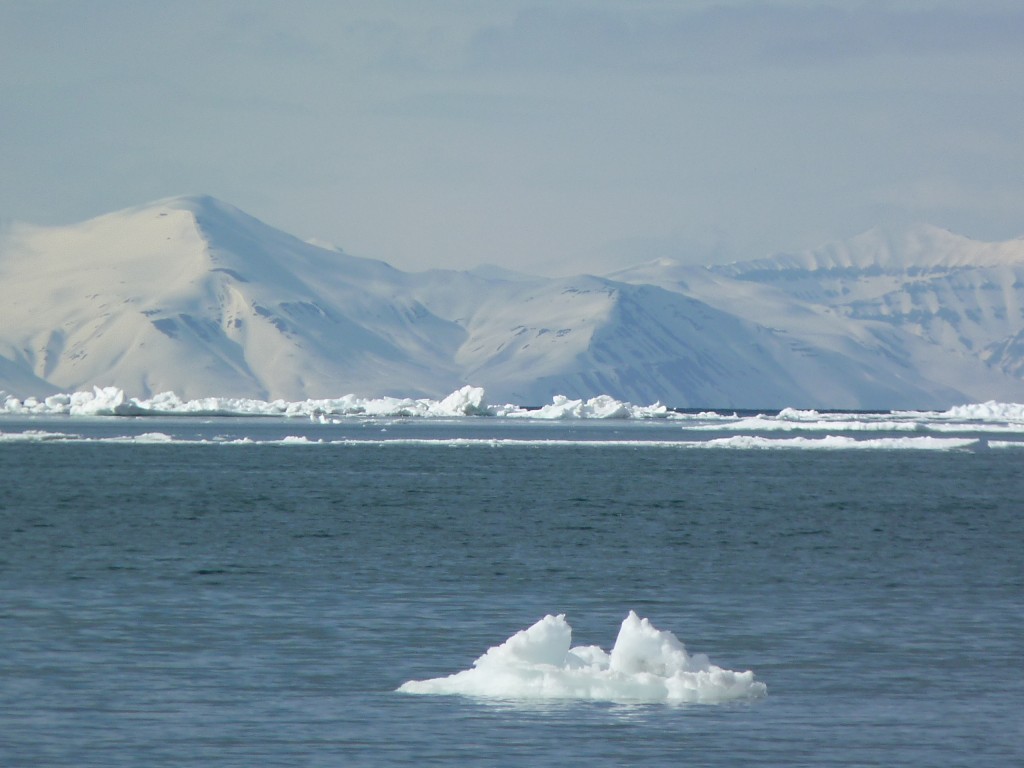
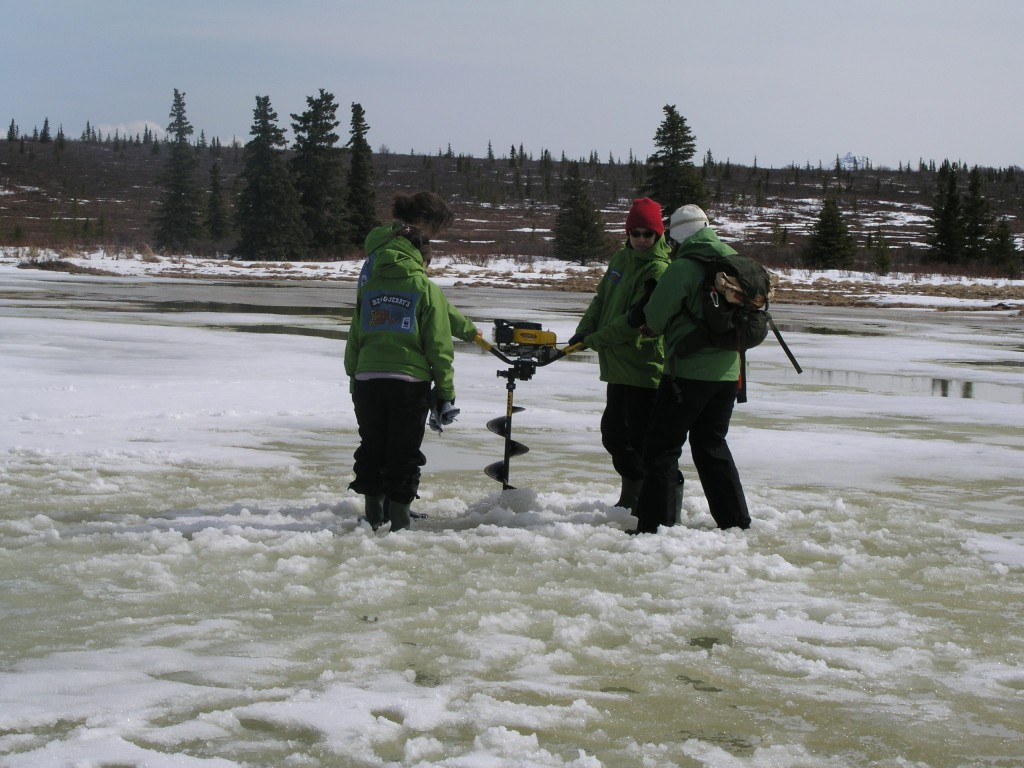
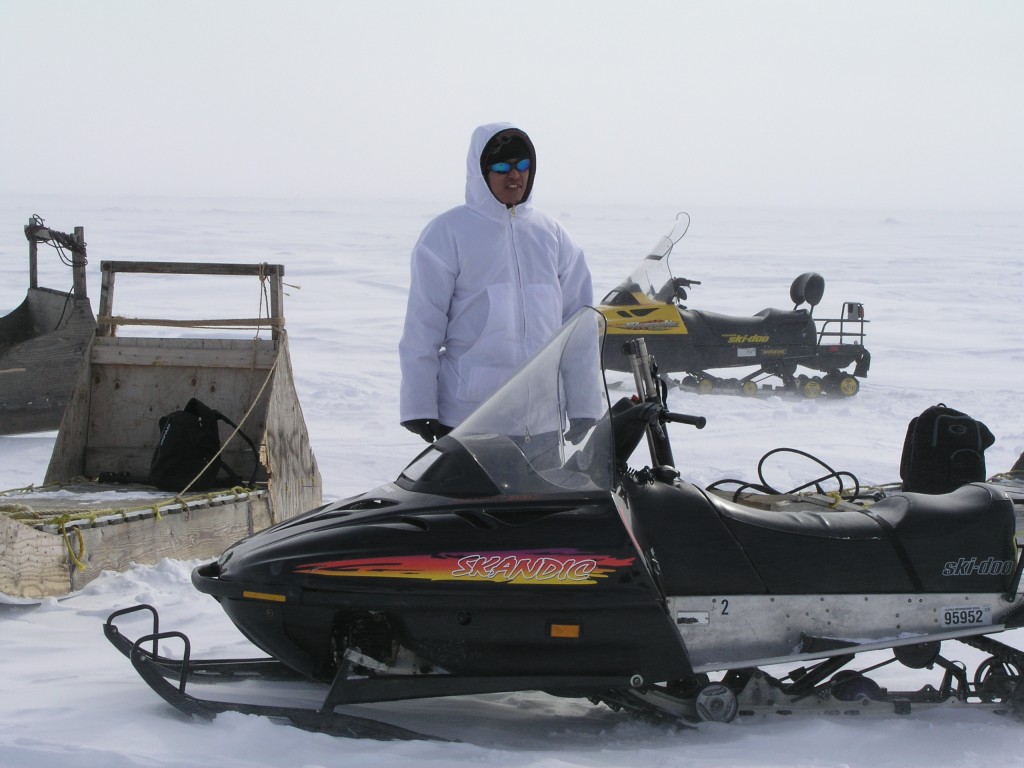
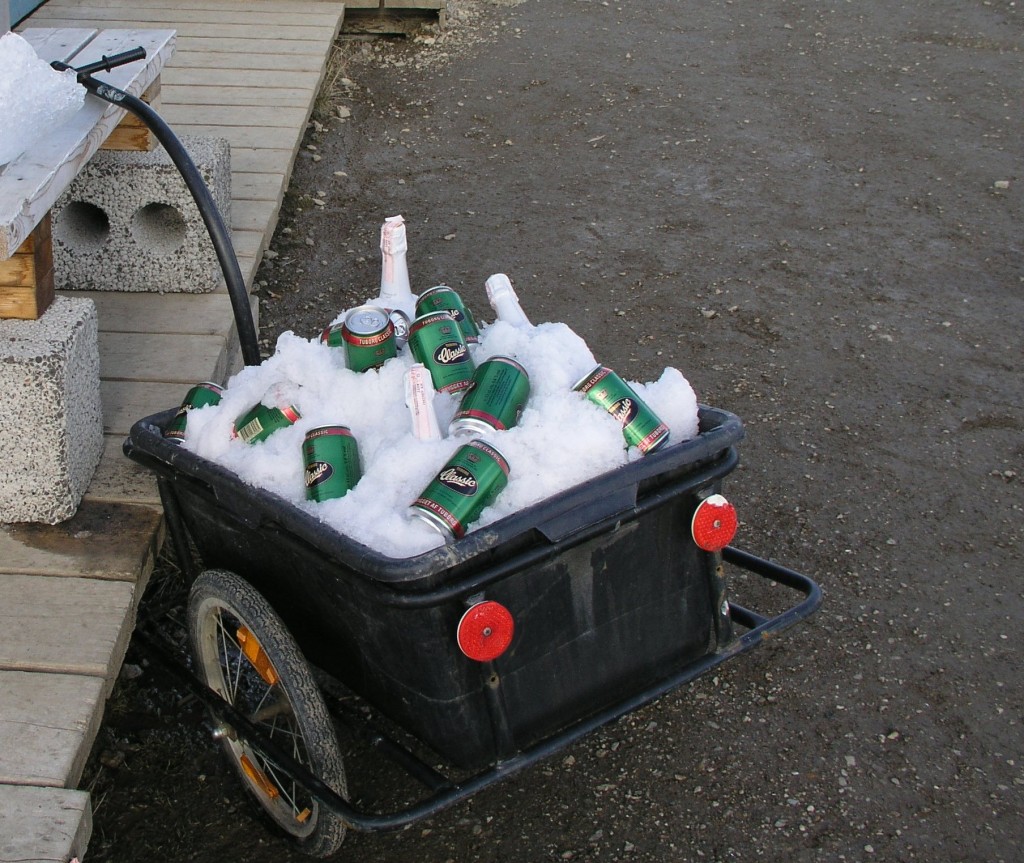

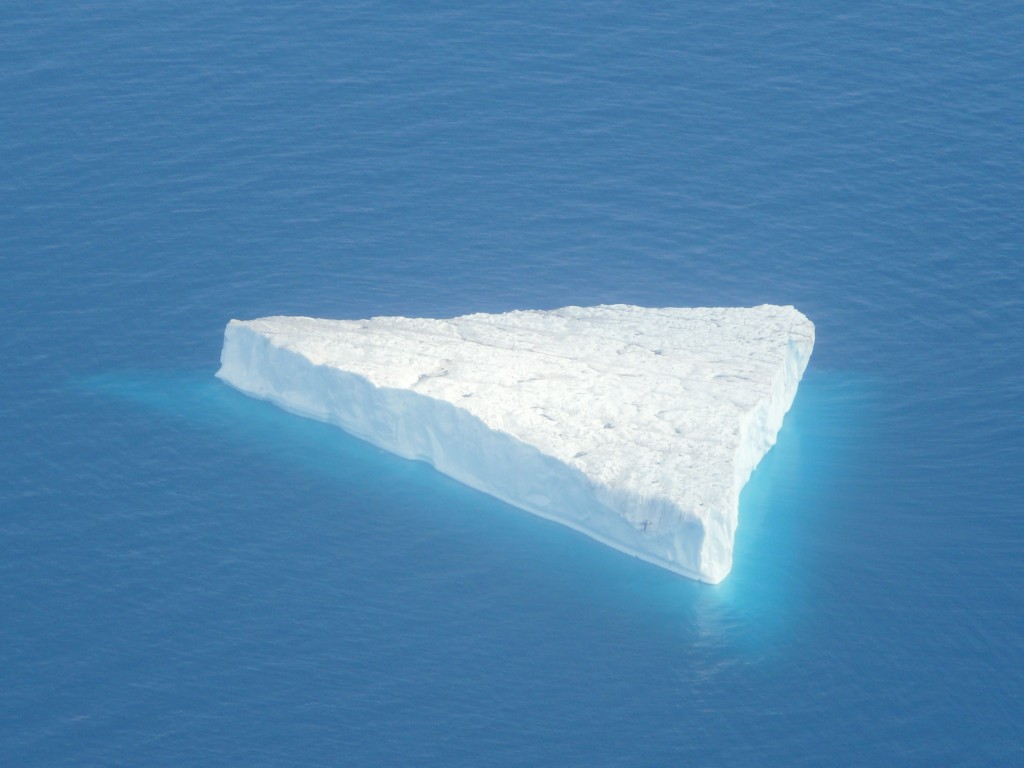
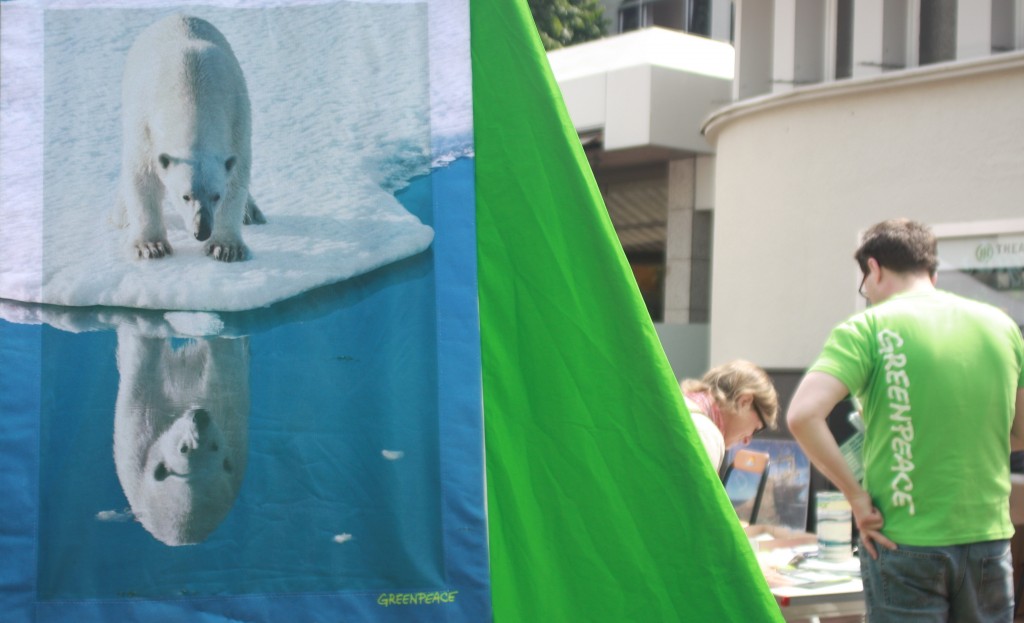
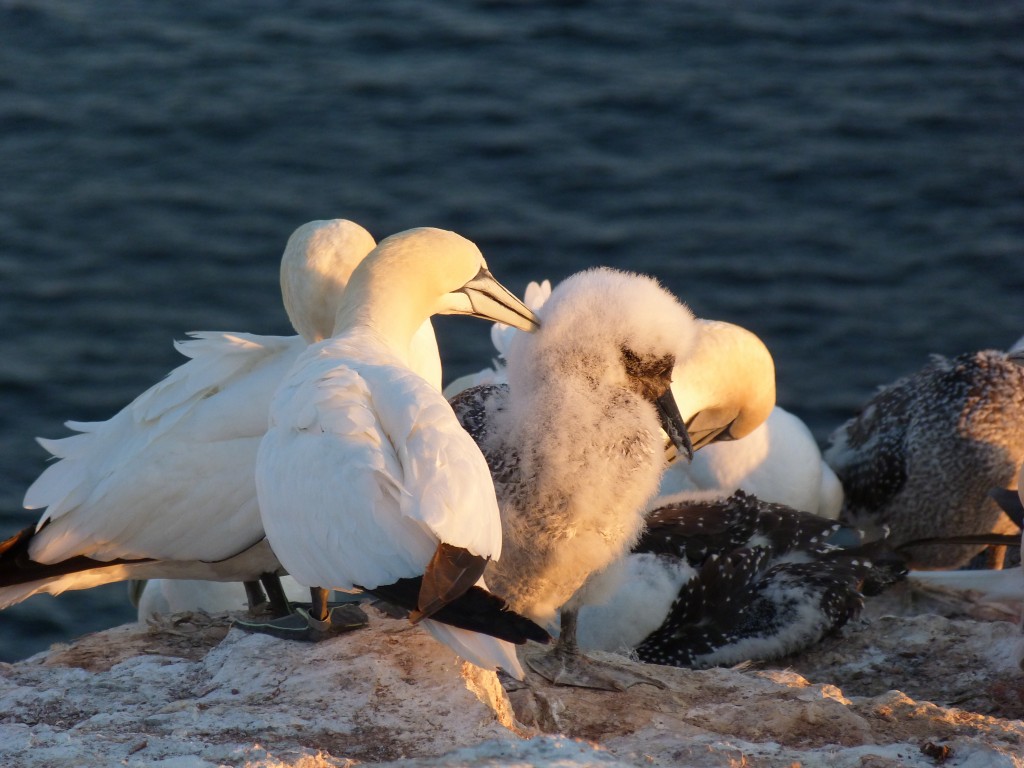
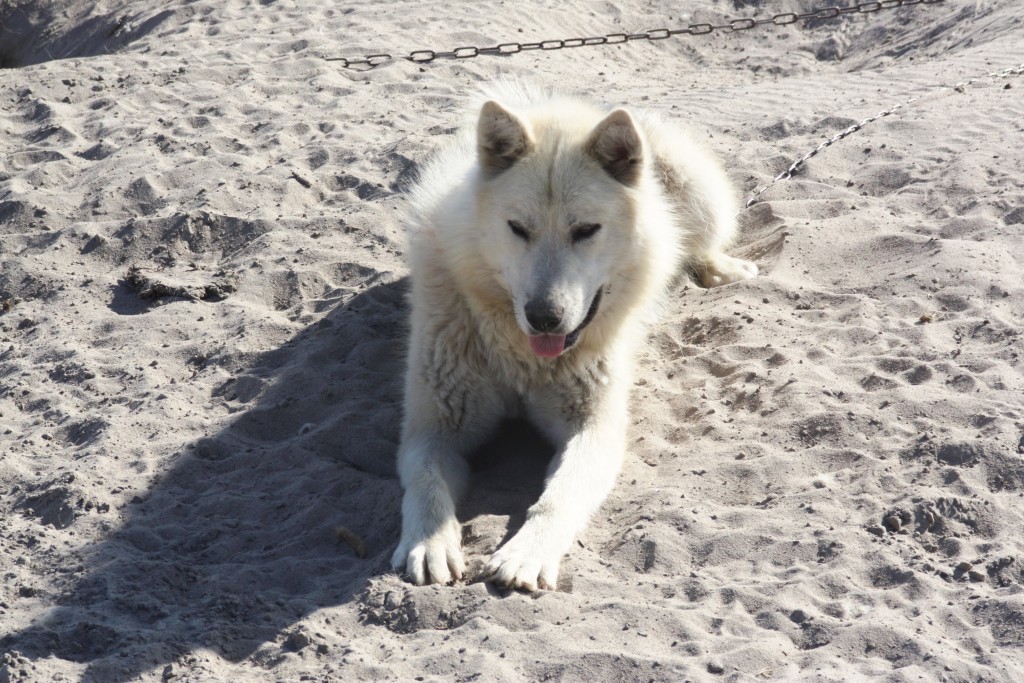
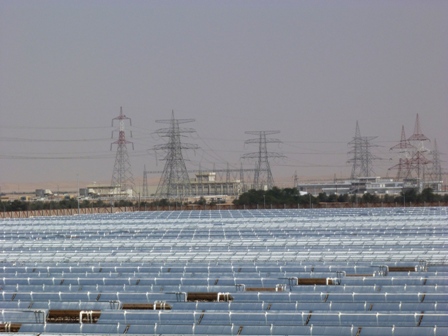
















Feedback